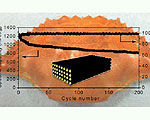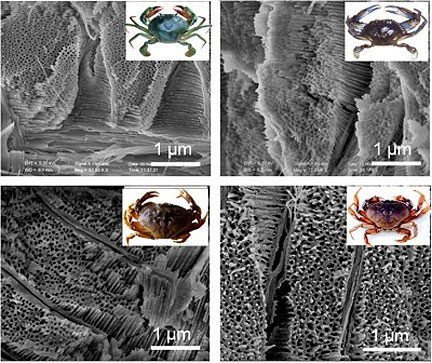Better Batteries from Crabs
 Jun-23-13
Using the nanostructure of crab shells, Stanford researchers hope to create a more efficient lithium-ion battery with an energy storage capacity up to 10 times larger than conventional batteries.
Jun-23-13
Using the nanostructure of crab shells, Stanford researchers hope to create a more efficient lithium-ion battery with an energy storage capacity up to 10 times larger than conventional batteries.Although the capacity of lithium-ion batteries could be increased with the use of silicon anodes and sulfur cathodes, these materials cause the electrodes to expand and contact so greatly that they eventually crack. To counteract this problem, researchers have been placing the sulfur and silicon inside carbon nanofibers.
The team at Stanford has discovered that crab shells, which are made up of tiny channels only 70 mm wide, could replace the carbon as frameworks for the electrodes. The team, led by Yi Cui, tested the theory by isolating the nanofibers from the shells of locally purchased stone crabs and then filling them with either silicon or sulfur. After 200 charge-discharge cycles, 60 percent of the energy storage capacity remained in the sulfur-containing electrode and 95 percent remained in the silicon version. By comparison, most cellphone batteries retain 80 percent of their charge after 500 cycles.


Add Your Comment